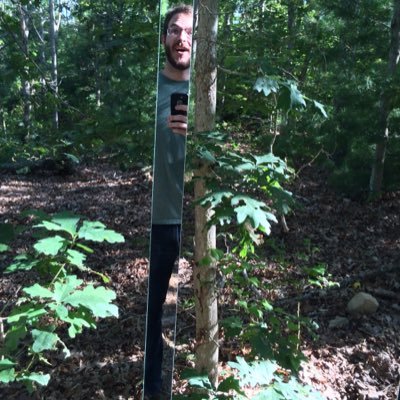
Chaolin Zhang
@chaolinzhang
Followers
2K
Following
2K
Media
67
Statuses
2K
associate prof of systems bio at columbia university; networking in the rna world; go genome wide, for single nucleotide. 行胜于言. 📢 hiring students & postdocs
Columbia University, New York, NY
Joined December 2016
Four papers from the lab this year so far, a few more to go. These papers are a good reflection of our venture into engineering RNA regulation for research and therapeutics. Contact me if interested in this research direction. #RNA #engineering #PrecisionMedicine #PostDoc
2
6
56
The right way to remember Jim Watson is to remember him honestly. He was a central figure in one the 20th century's most impactful scientific discoveries, in the creation of modern molecular biology, in the beginning of the genomics era, and (less notably) to shaping the
32
83
541
For obvious reasons, I've become fascinated with retrotransposons. So we (Alex Whiteley and I) wrote an article now out in @NeuroCellPress on how we think retrotransposons influence brain function and health!
4
17
69
Steven McKnight, Ph.D., Professor of Biochemistry at #UTSW, is the 2025 Albert Lasker Basic Medical Research Award (@LaskerFDN) recipient for pioneering work on low-sequence complexity proteins and their impact on cellular organization and disease.
utsouthwestern.edu
Steven McKnight, Ph.D., Professor of Biochemistry at UT Southwestern Medical Center, has been awarded the Albert Lasker Basic Medical Research Award.
2
21
61
Many proteins bind RNA, yet we still don’t know what RNAs most bind because methods map one RBP at a time. In @CellCellPress, with the Jovanovic lab, we describe SPIDR – a method for mapping the RNA binding sites of dozens of RBPs in a single experiment. https://t.co/Zs2Rn35D3s
9
116
402
We are excited to bring to you the Virtual Cell Challenge, a new benchmark initiative from the @arcinstitute to evaluate predictive models of cellular response to perturbation.
Register today for the Virtual Cell Challenge and use AI to solve one of biology’s most complex problems. Announced in @CellCellPress, the competition is hosted by Arc Institute and sponsored by @nvidia, @10xGenomics, and @UltimaGenomics.
1
17
93
Look forward to reading it!
Happy to introduce AlphaGenome, @GoogleDeepMind's new AI model for genomics. AlphaGenome offers a comprehensive view of the human non-coding genome by predicting the impact of DNA variations. It will deepen our understanding of disease biology and open new avenues of research.
1
0
1
Excited to report that our work to infer neuron type specific splicing-regulatory networks and splicing factor activities is now published in @CellReports. Led by a recent graduated PhD student @MoakleyDan. See 🧵⬇️. https://t.co/RFg7SkVhcU
@ColumbiaPS @ColumbiaSysBio #rna
cell.com
Moakley et al. use network reverse engineering to map comprehensive splicing-regulatory networks and predict their differential activity across mouse neocortical cell types by leveraging transcript...
1/ Very happy to share that our preprint is now online! Check it out here: https://t.co/OPKWApLmVp In the study, we model RNA alternative splicing regulation in the neocortex and validate both neuron type-specific and type-orthogonal regulatory programs. Read on for a summary!
1
5
33
Excited to announce a 2 week Cold Spring Harbor Asia (CSHA) summer course on Computational Genomics Aug 9-23, co organized by Jingyi Jessica Li @jsb_ucla, Qiangfeng Cliff Zhang, and myself. Application deadline June 8. @cshlcourses @CSHANews
https://t.co/rNRuUZExz9. CSHA is
1
1
10
A set of non-coding genetic variants -- mutations in RNA genes-- cause neurodevelopmental disorders by disrupting alternative splicing across the genome https://t.co/qOkCUZUKhW
0
7
39
Excited to share our new paper on Nature - how Ku accommodates Alu expansion in primates by binding to dsRNA, providing a clue for both the high levels of Ku and its essentiality in human cells. Thank @chaolinzhang @hchung03 @LenaSteckelberg More to come https://t.co/MQhQUK3soO
nature.com
Nature - Studies on the essentiality of Ku in human cells reveal that Ku interacts with diverse double-stranded RNA molecules, including antisense Alu, and enables tolerance of Alu sequence...
10
24
91
Thank @LomvardasLab for the shout out! This is a great collaboration with @zha_lab! I guess #RNA always comes in to play a role when one does not expect them to - in this case Ku turns out to be the first (non-canonical) RBP I know of that co-evolves with Alu expansion!
https://t.co/oZHveAOBhV Awesome new paper from Shan Za and @ColumbiaBiochem and systems biology colleague Chaolin Zhang @chaolinzhang
1
1
17
Happy to share our update to LeafCutter, which allows the study of unproductive splicing from short-read RNA-seq. We report findings from analysis of 3 large datasets (GTEx, multi-tissue development in 7 species, Alzheimer brains from AD FunGen consortium). See thread by Carlos.
We are excited to share our new preprint on LeafCutter2! Our new method clusters, quantifies, and classifies splice junctions and intron clusters according to their molecular functionality (e.g., protein-coding or NMD-splicing). @yang_i_li
https://t.co/xBChgMbnEH
3
14
59
Given some recent publications regarding #RNA #Splicing prediction using #DeepLearning we decided to assess some of those claims with surprising findings that have to do more with the target function you chose…
biociphers.wordpress.com
In today’s blog post, I want to discuss some work/claims related to a topic that has been one of my lab’s focus areas – predicting tissue-specific alternative splicing (AS) of RNA. Some backg…
1
17
45
In this study, Bangru et al. describe a regulatory switch that controls hepatocyte polyploidization and maturation through the activation of an RNA alternative splicing program that promotes cytokinesis failure and binucleation. Learn more here: ➡️ https://t.co/24wdMQDSwE
0
2
4
Excited to share our latest work! We asked if and how TDP-43 regulates RNA transport in neurons and if this is misregulated in ALS. We found that it works to keep RNAs *out* of neurites, and that loss of TDP-43 activity results in specific RNAs aberrantly accumulating there.
6
44
222





















